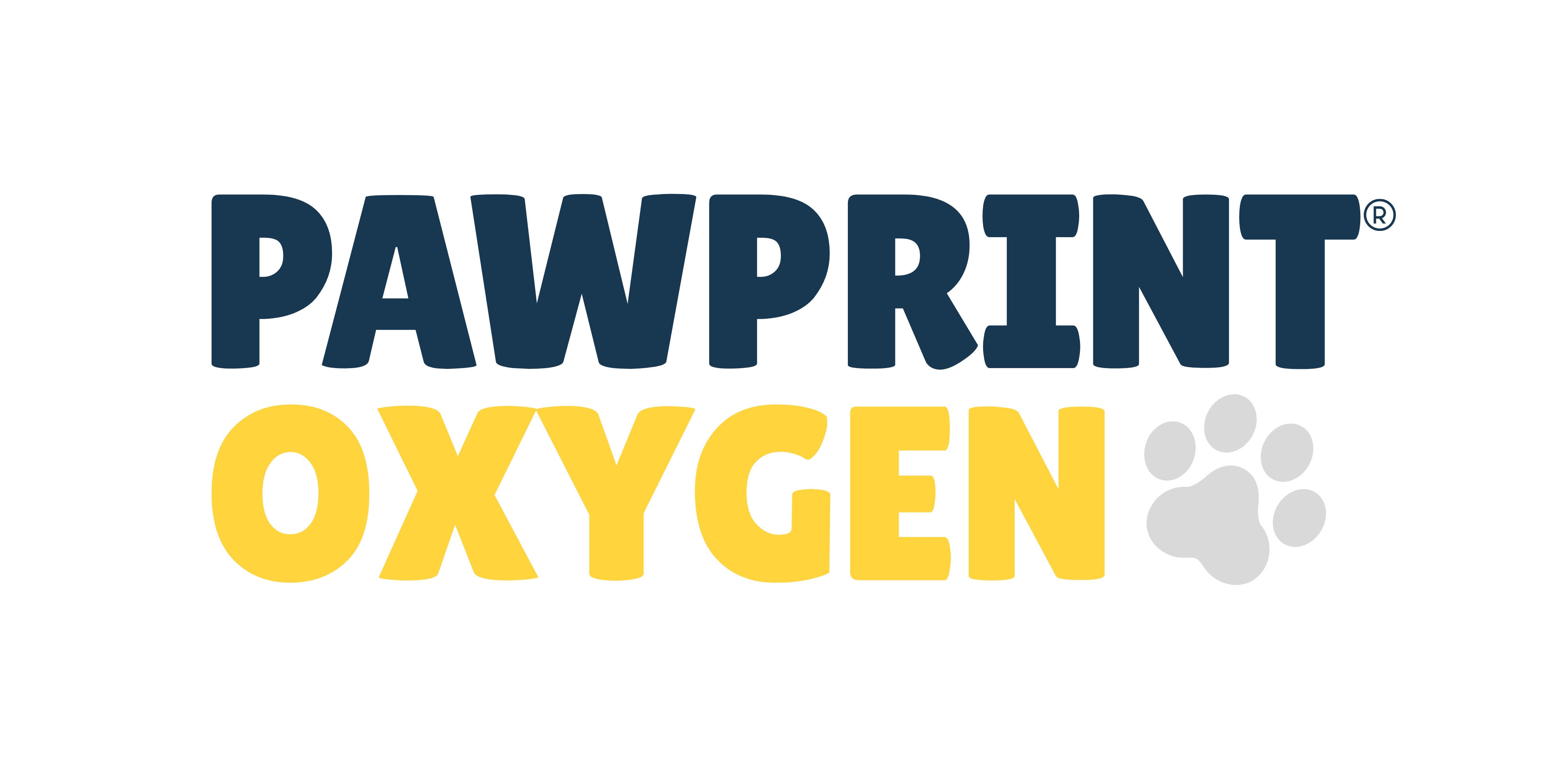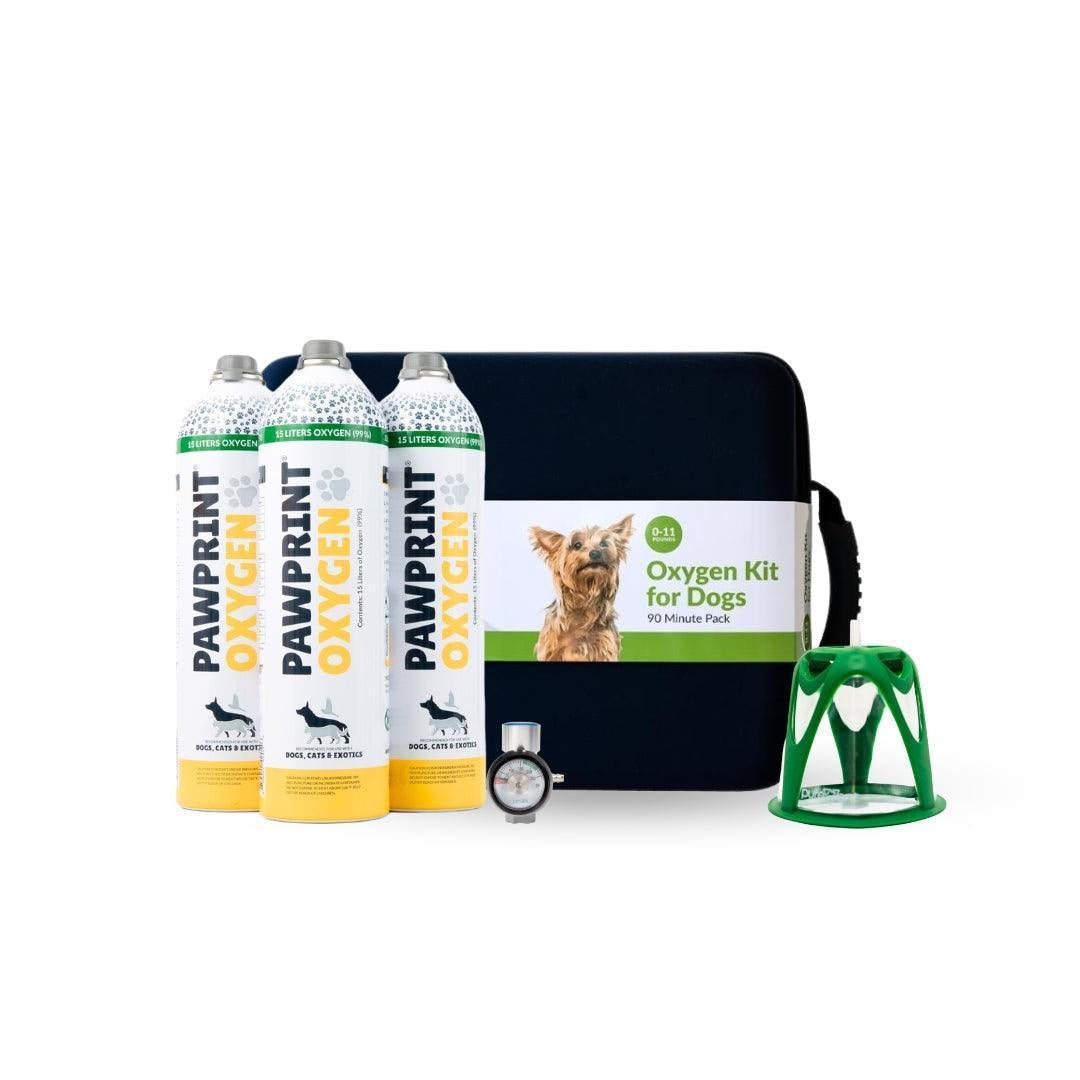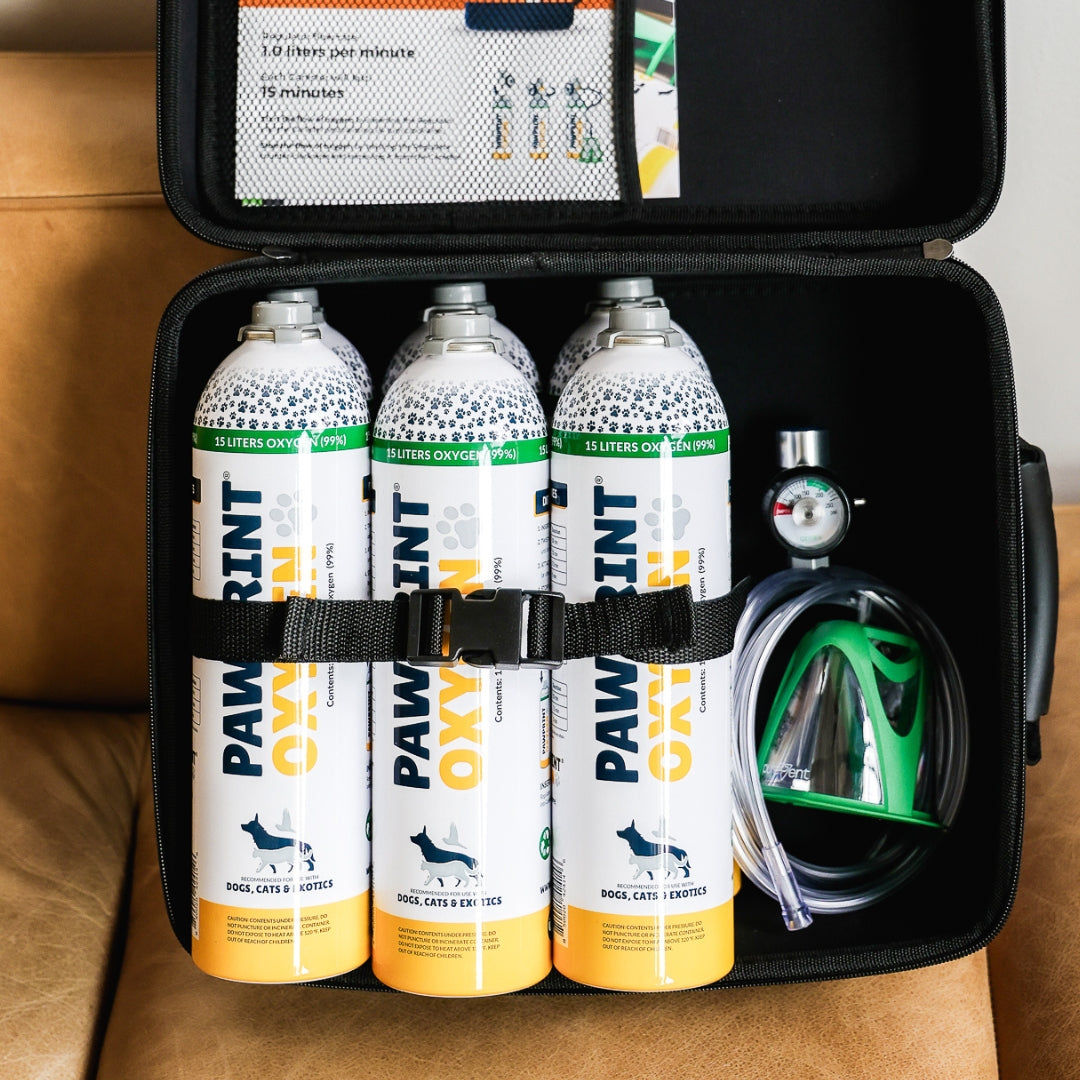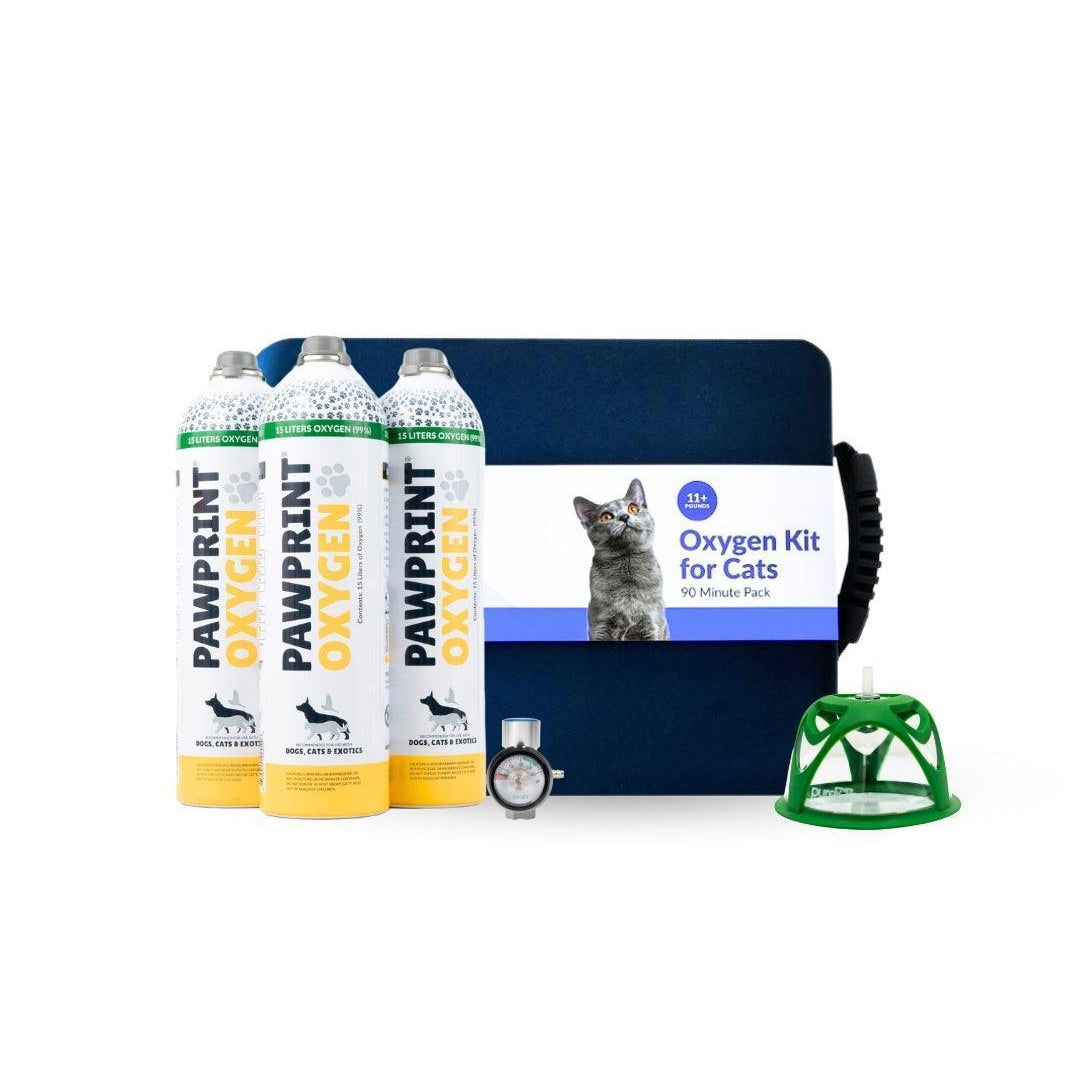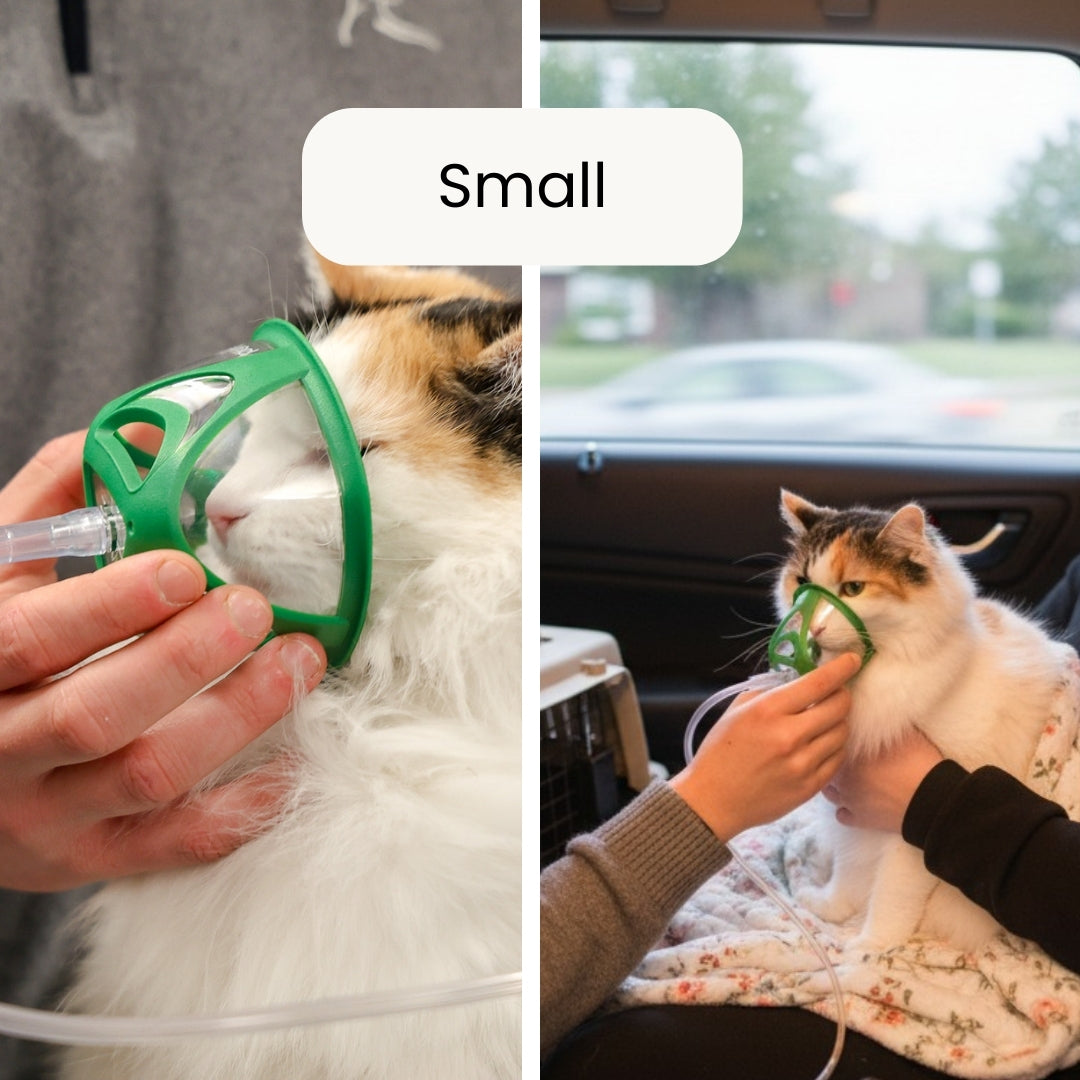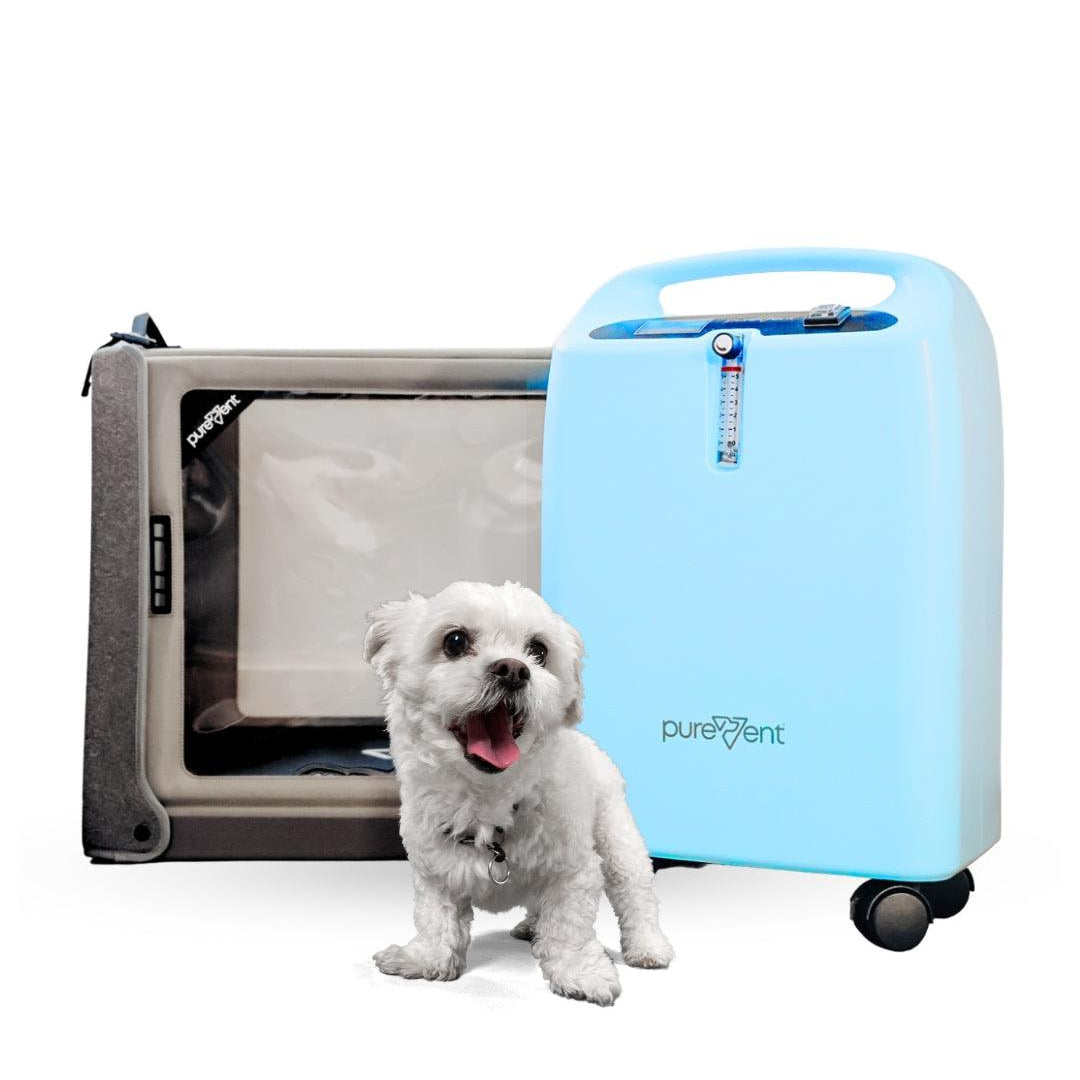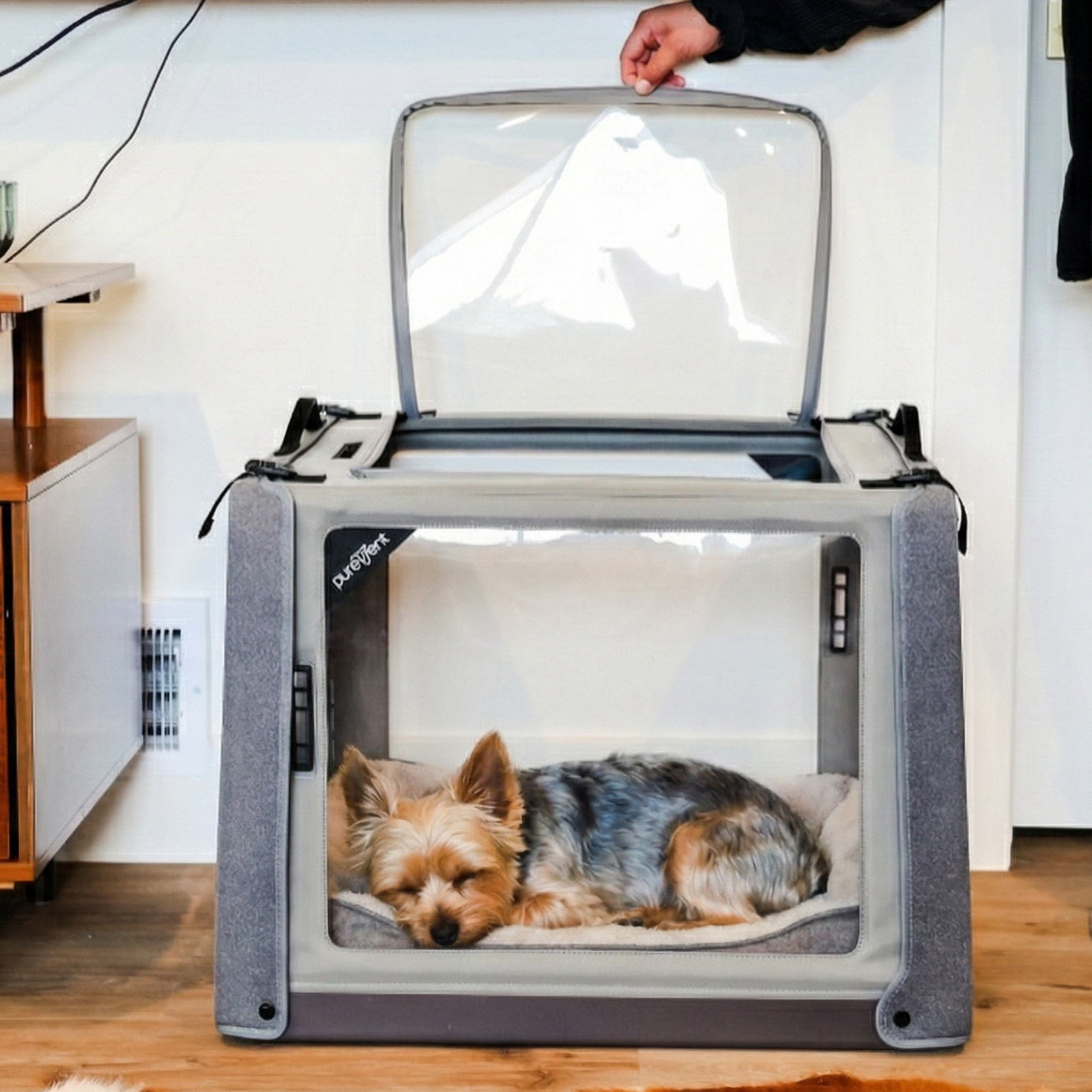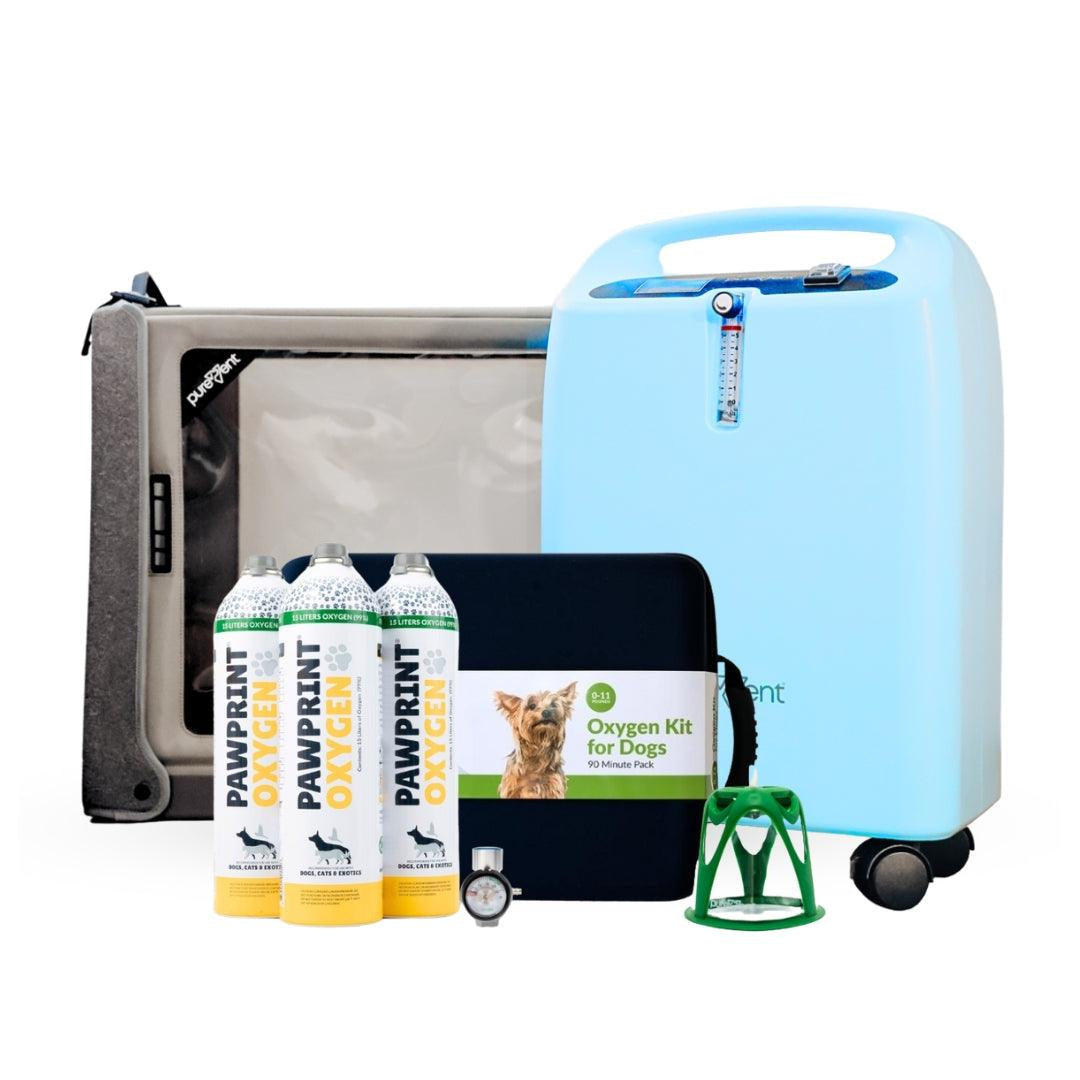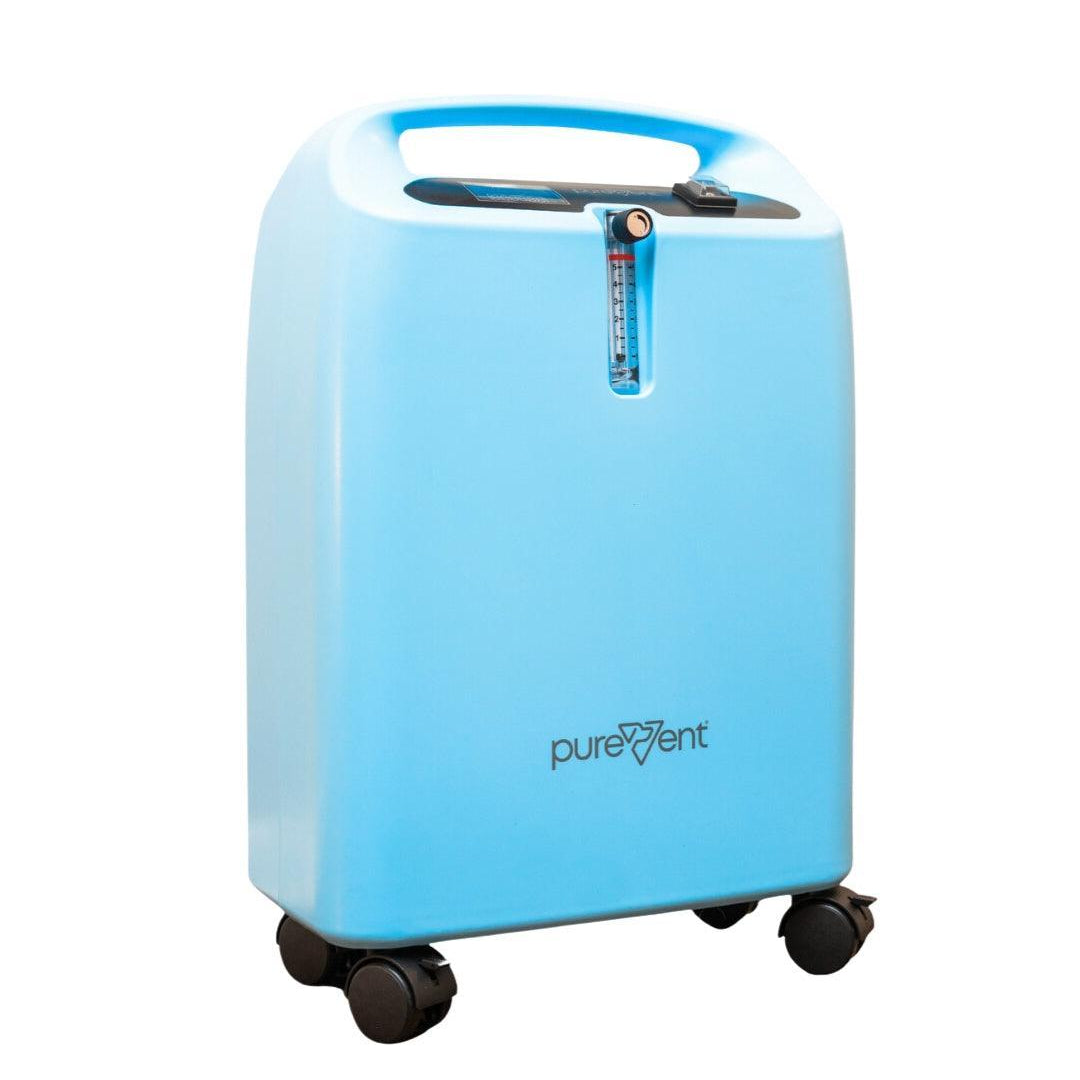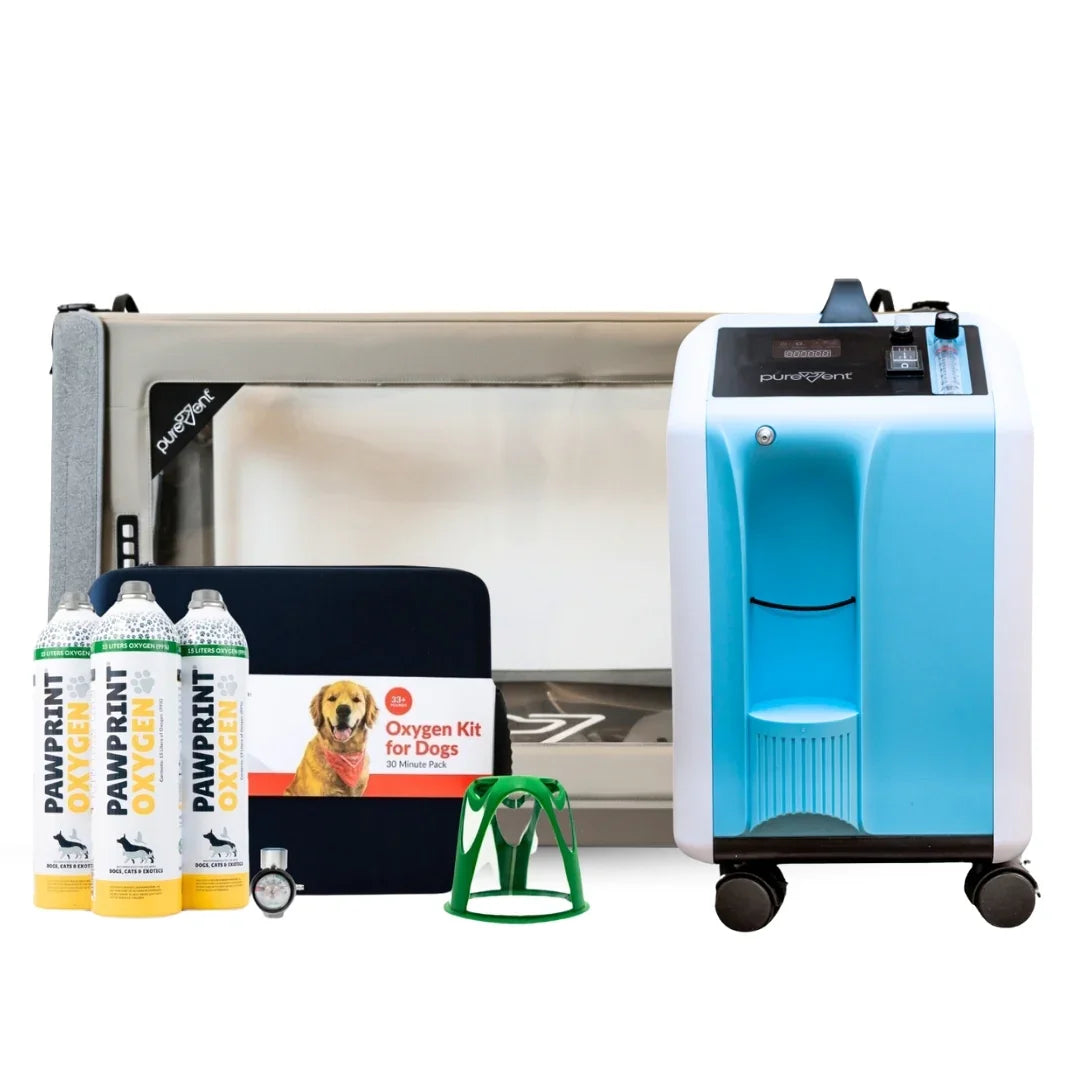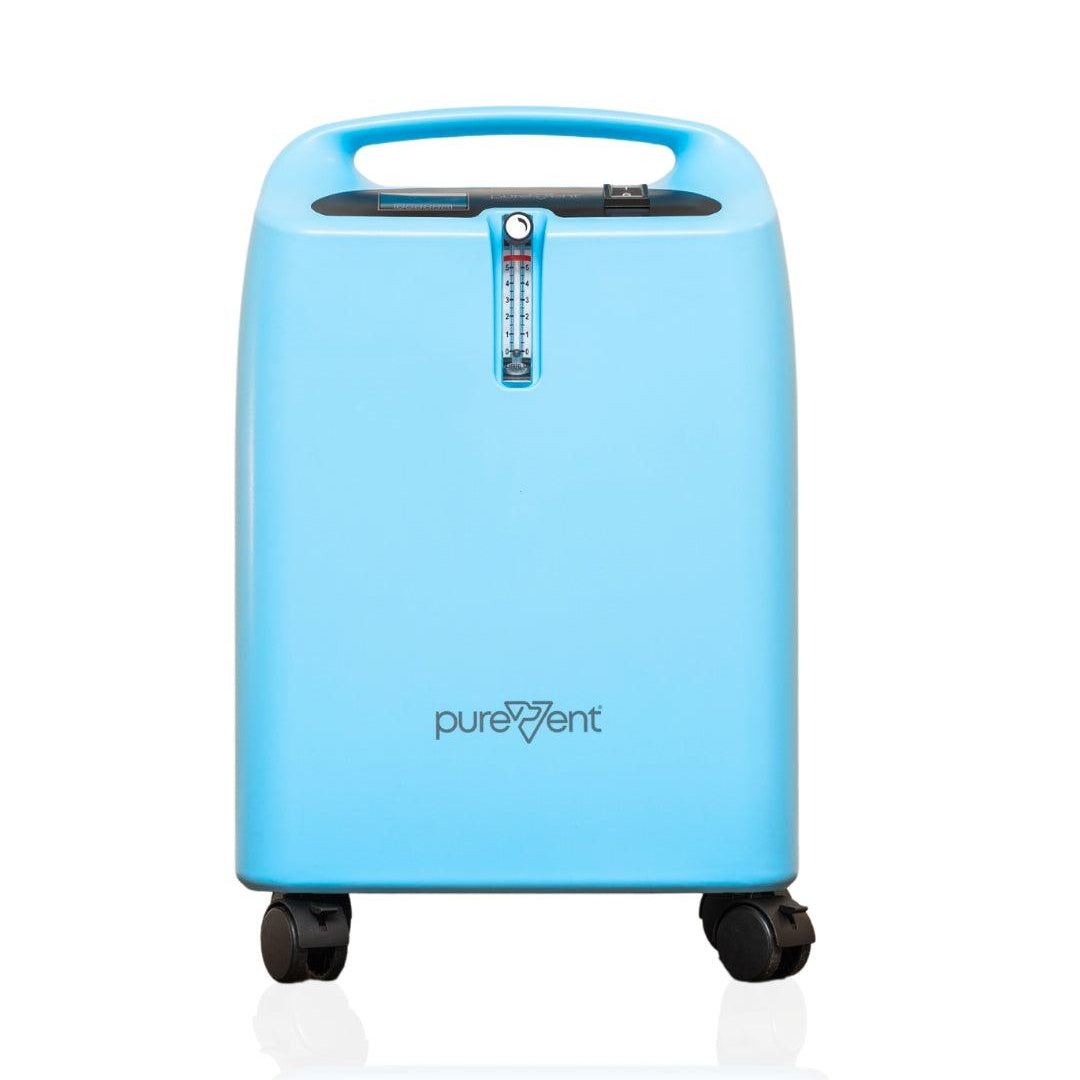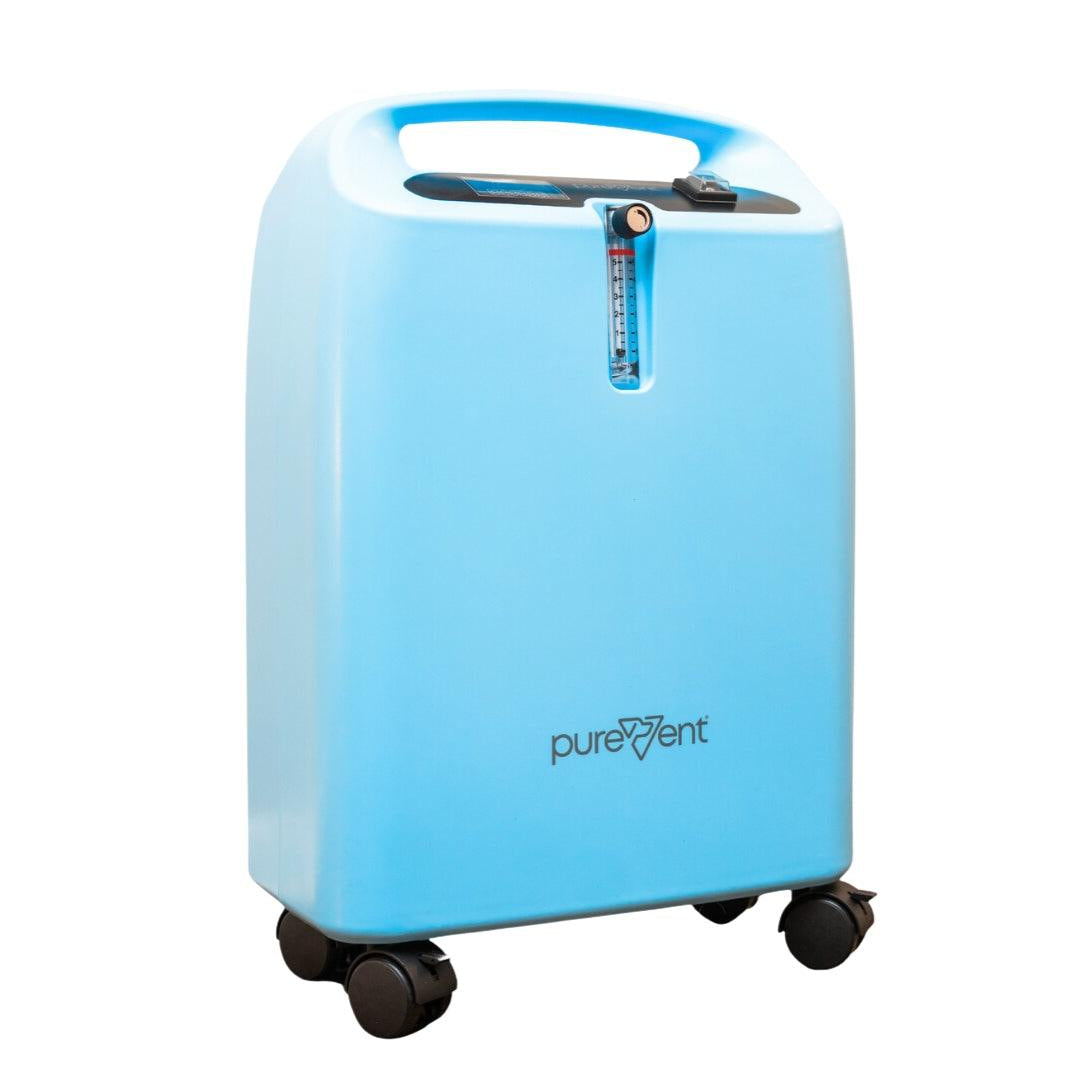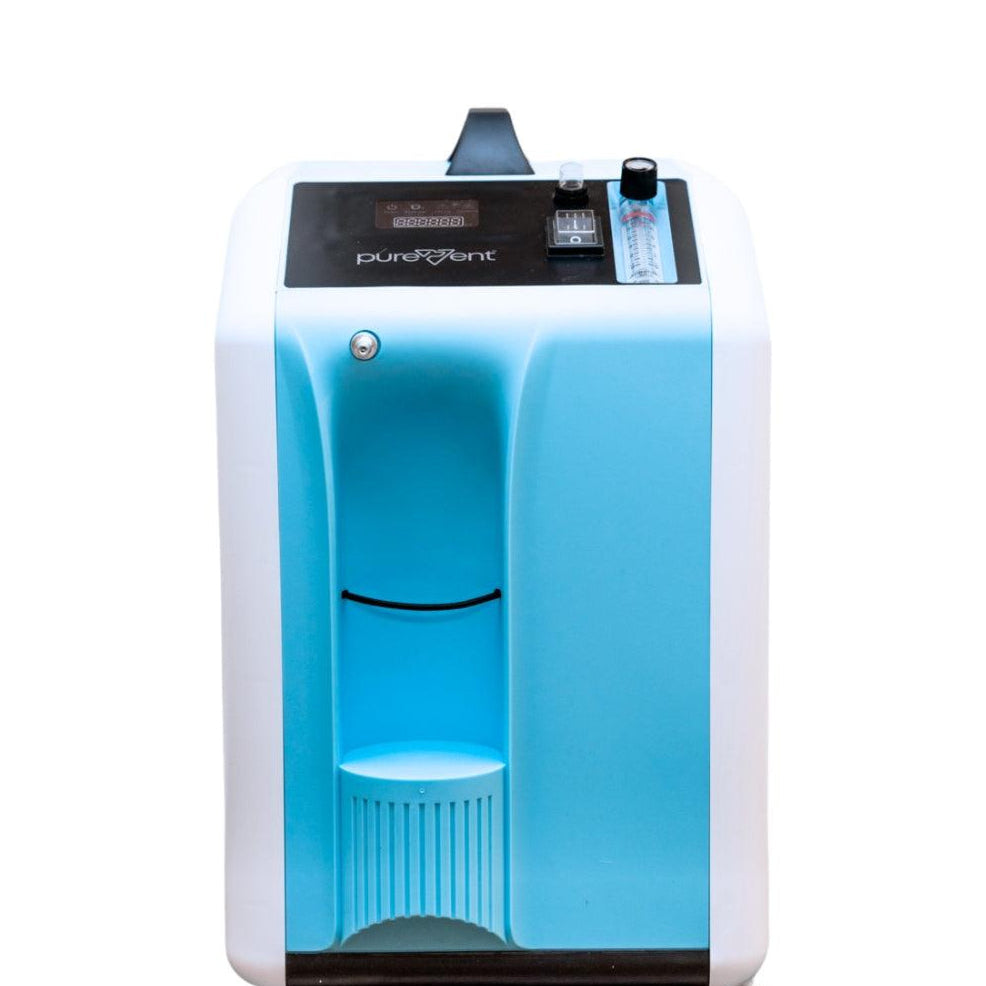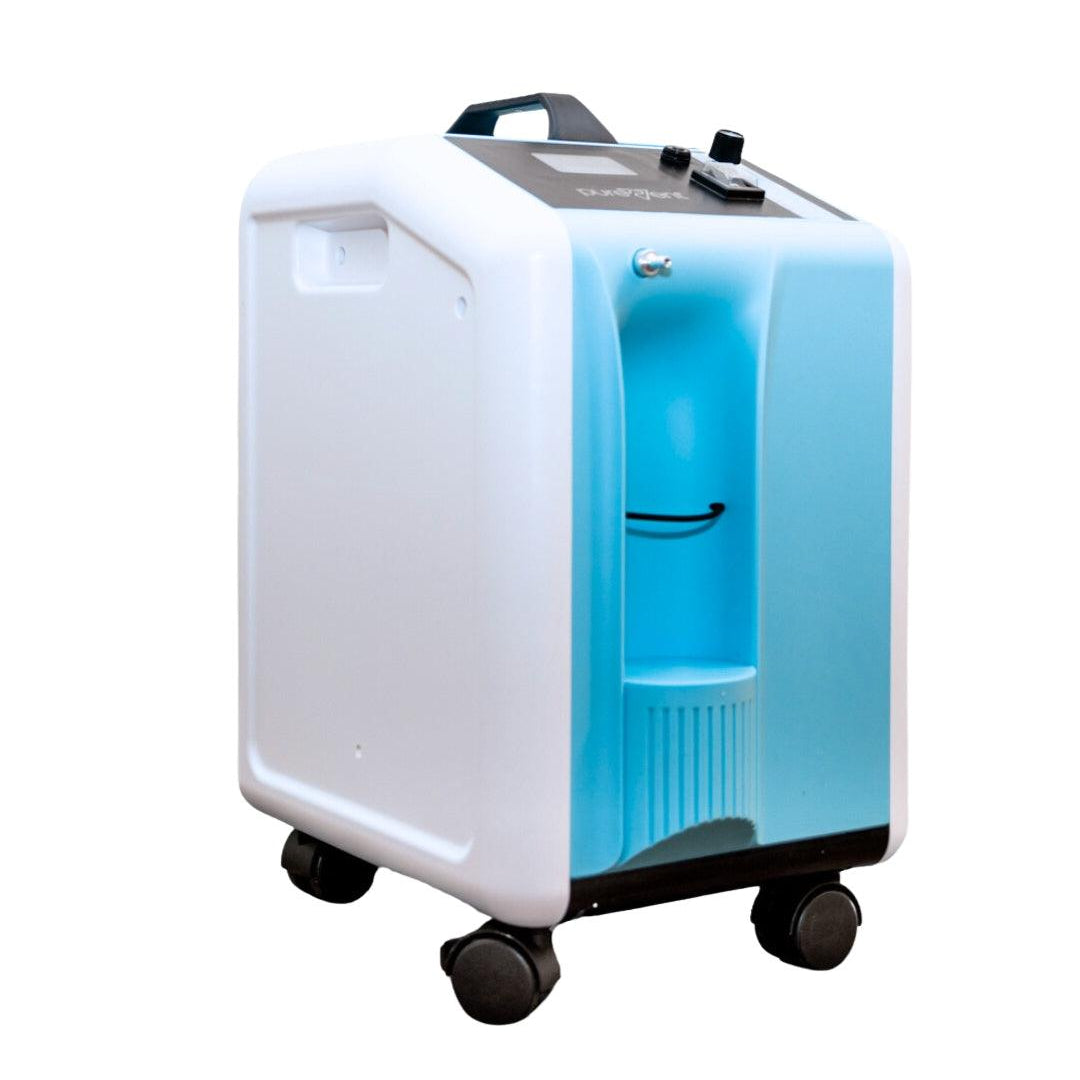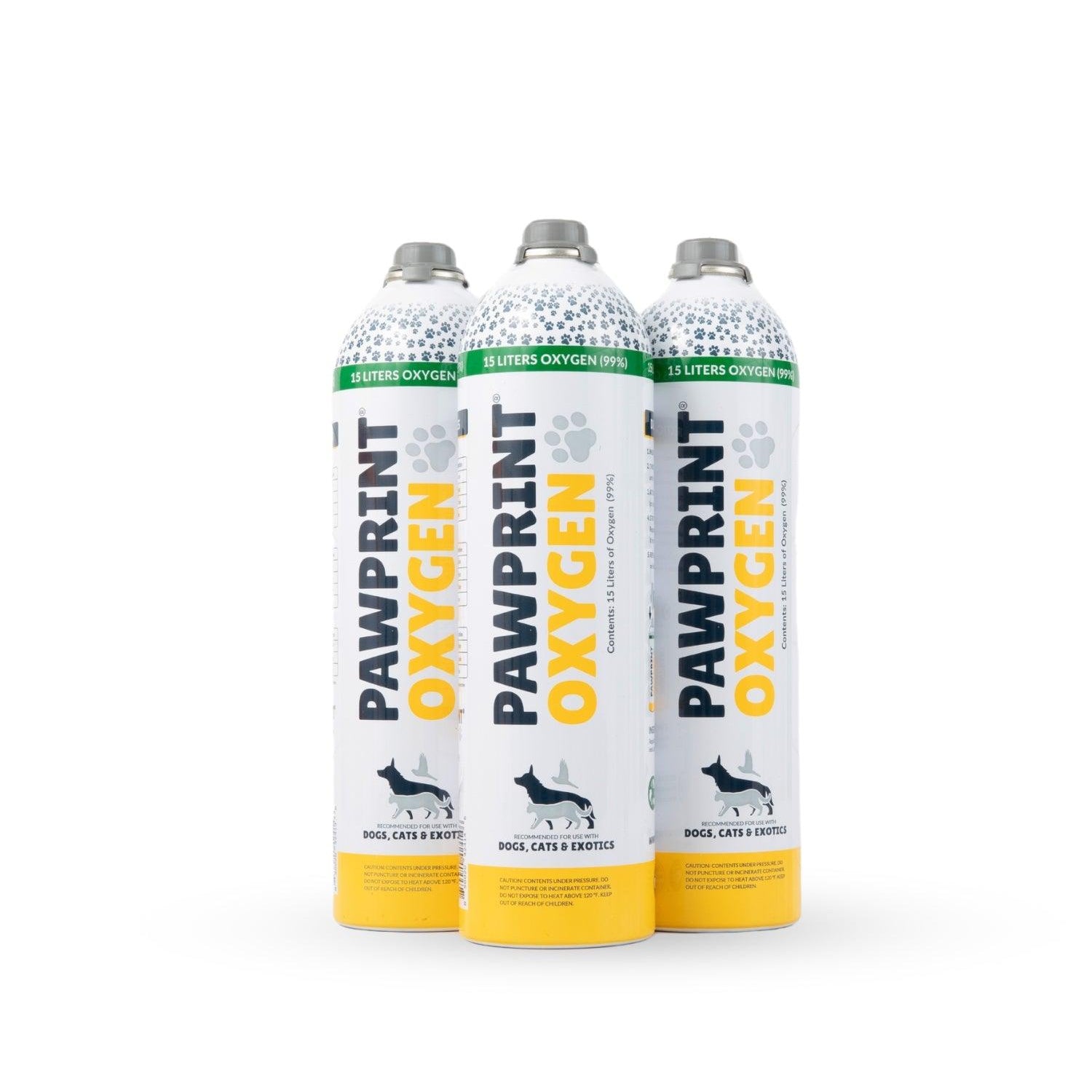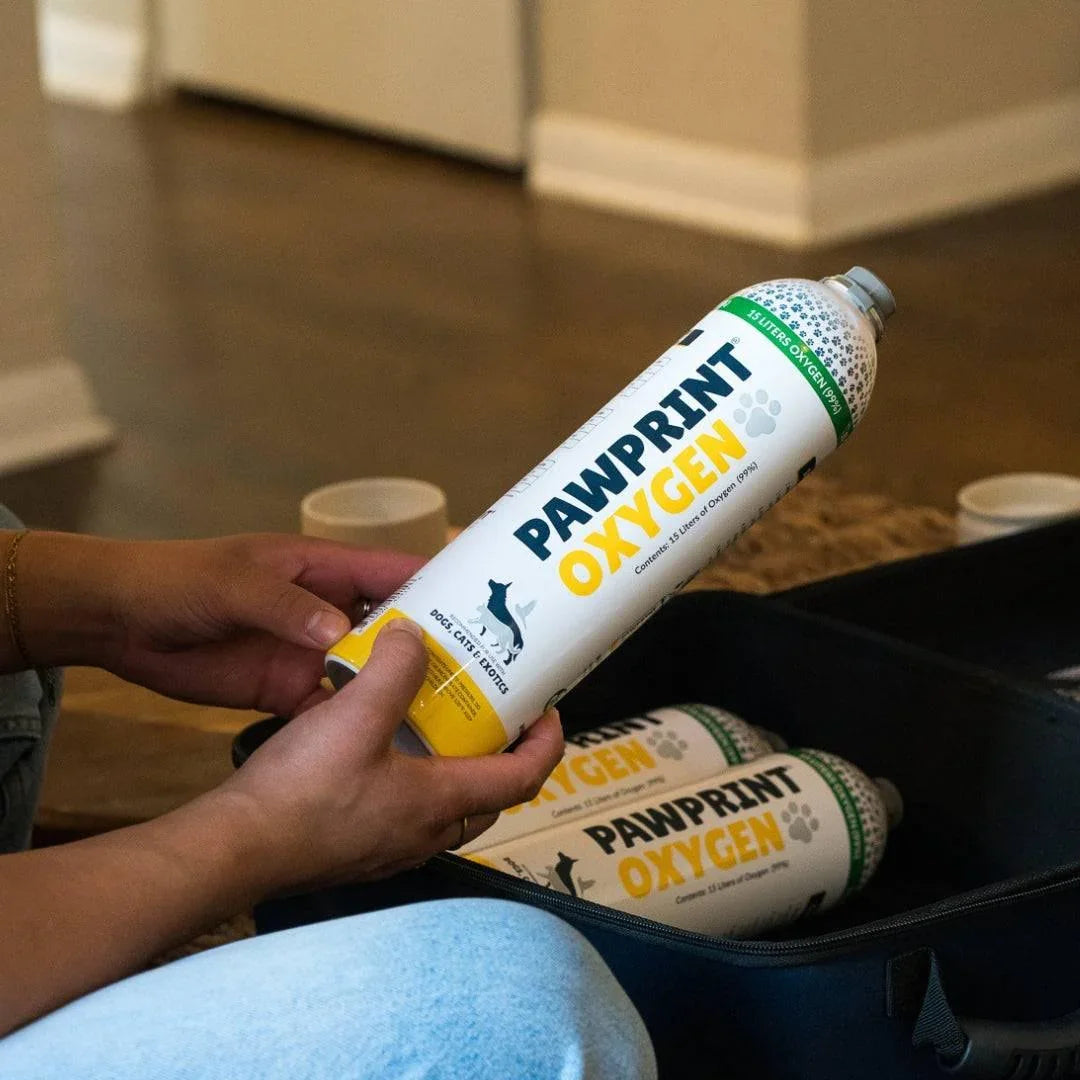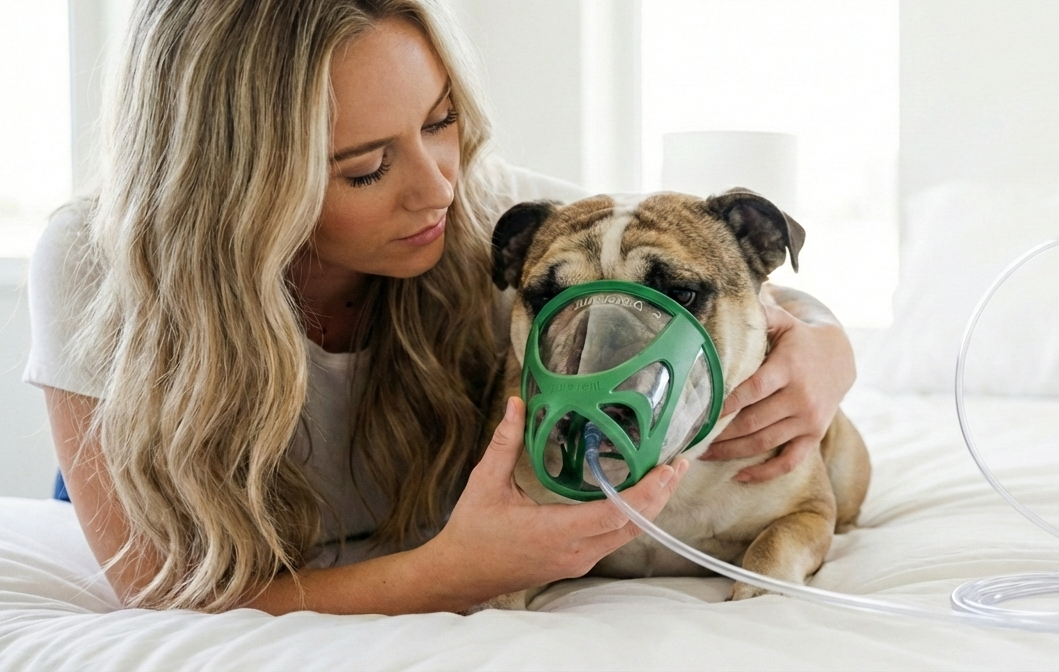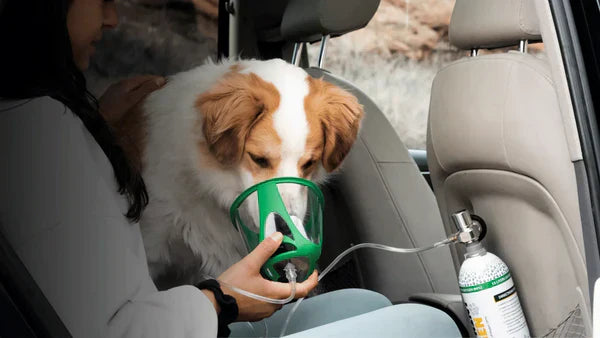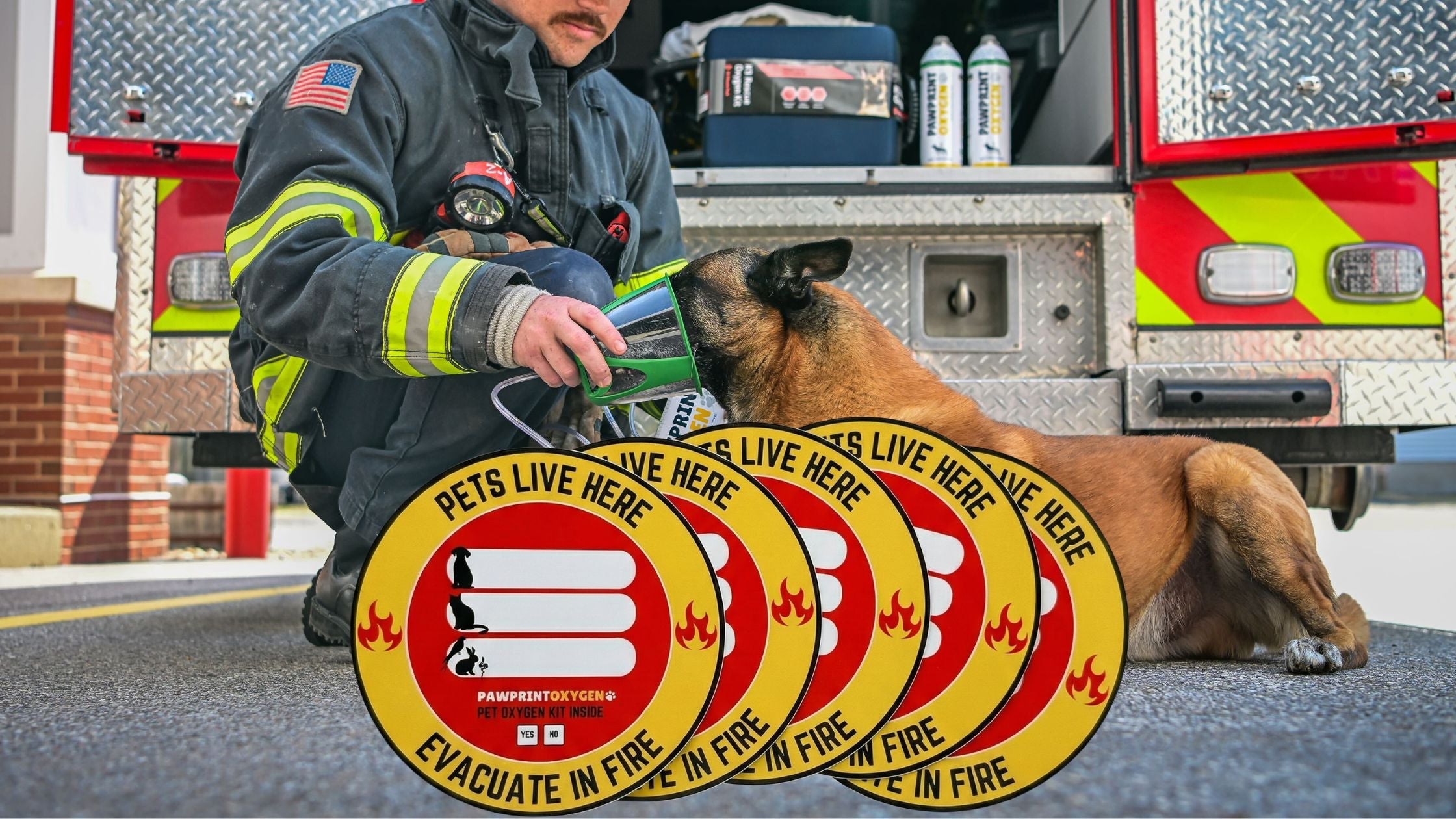Heart conditions in pets, such as congestive heart failure, cardiomyopathy, and heart murmurs, can significantly diminish their quality of life. These ailments challenge the heart's ability to pump effectively, often leading to distressing symptoms such as coughing, lethargy, and difficulty breathing. Addressing these symptoms and supporting the overall health of pets with heart conditions is crucial.
Oxygen therapy emerges as a vital treatment option in this scenario. It enhances the availability of oxygen in the bloodstream, thereby alleviating the symptoms associated with heart conditions and improving the affected pets' overall comfort and activity levels. This article explores the essential role of oxygen therapy in managing pet heart conditions, highlighting various delivery methods, safety protocols, and the critical involvement of veterinary professionals in recommending and monitoring treatment plans.

Understanding Heart Conditions in Pets
Congestive heart failure (CHF) in pets occurs when the heart loses the ability to pump blood effectively, leading to fluid build-up in or around the lungs and other parts of the body, such as the abdomen. This condition can result in symptoms like coughing, difficulty breathing, lethargy, and reduced exercise tolerance. It generally arises from underlying heart disease and can significantly impact a pet’s quality of life. For more detailed information, please visit VCA Hospitals
Cardiomyopathy refers to diseases of the heart muscle, where the heart becomes enlarged, thick, or rigid. In pets, especially cats and certain dog breeds, cardiomyopathy can reduce the heart's ability to pump blood effectively, leading to heart failure or sudden death in severe cases. The impact on a pet's health can be quite severe, as the condition often goes undetected until symptoms become apparent. Detailed resources can be found at Cornell University College of Veterinary Medicine.
Heart murmurs are abnormal heart sounds, usually heard through a stethoscope, that are caused by turbulent blood flow. They can be indicative of underlying heart problems but can also be benign. The severity and impact of heart murmurs can vary widely; some are harmless, while others may lead to significant health issues if they result from structural heart problems. For further reading, consult VRCC Veterinary Specialty & Emergency Hospitals.
Each of these conditions requires careful diagnosis and management to ensure the best possible outcome for the affected pet. Regular veterinary check-ups are essential for early detection and effective treatment of heart conditions.
Is congestive heart failure more prevalent in certain dog breeds?
Yes, congestive heart failure (CHF) is more prevalent in certain dog breeds due to genetic predispositions and breed-specific health concerns.
Dog breeds that may be predisposed to CHF:
- Cavalier King Charles Spaniel
- Miniature and Toy Poodles
- Dachshund
- Doberman Pinscher
- Great Dane
- Boxer
- Irish Wolfhound
- Cocker Spaniel
What foods should I avoid feeding my dog with CHF?
If your dog has congestive heart failure, avoid feeding foods high in sodium, as excess salt can lead to fluid retention and worsen heart strain. This includes processed treats, deli meats, cheese, canned foods with added salt, and table scraps like chips or fast food . Also, steer clear of high-fat foods that may contribute to obesity, putting additional stress on the heart. Certain commercial dog foods may contain excessive sodium, so opt for low-sodium, heart-healthy diets recommended by your vet. Additionally, some dogs with CHF may require taurine and L-carnitine supplementation, so avoid grain-free diets linked to taurine deficiency-associated dilated cardiomyopathy (DCM) unless specifically advised by your veterinarian.
Can CHF go away on its own, or is it permanent?
Congestive heart failure does not go away on its own and is generally a progressive, lifelong condition. While it cannot be cured, early diagnosis and proper management with medications, dietary adjustments, supplemental oxygen therapy, and lifestyle changes can slow its progression and improve your dog's quality of life.
Treatment for CHF typically includes diuretics to reduce fluid buildup, ACE inhibitors to ease heart strain, and supportive therapies like oxygen or taurine supplementation if needed. Regular veterinary check-ups are essential to monitor heart function and adjust treatment and diet as needed. While CHF is permanent, proactive care can help your dog live a longer, more comfortable life.

Utilizing Oxygen Therapy for Heart Conditions in Pets
Oxygen therapy is a vital treatment option for pets with heart conditions. When a pet's heart is compromised, its ability to effectively circulate oxygen-rich blood throughout the body is diminished. This can lead to hypoxemia, where there is a deficiency of oxygen in the blood, causing various symptoms and distress in vital tissues and organs. Oxygen therapy can help by:
- Improving oxygen saturation
- Reducing the workload of the heart
- Enhancing tissue viability
- Alleviating symptoms
- Increasing quality of life
Oxygen therapy helps increase the concentration of oxygen in the blood. This is particularly beneficial for heart-compromised pets whose weakened heart function may not be able to maintain adequate oxygen levels in the bloodstream. By increasing the availability of oxygen, the pet will have sufficient oxygen delivered to all the tissues of the body.
By providing higher oxygen levels, this therapy can also help to reduce the demand on the heart to pump harder to supply the necessary oxygen to the body. When oxygen is readily available in the bloodstream, the heart can work more efficiently, reducing the strain and potentially slowing the progression of the disease.
Increased oxygen levels help in maintaining the health of the body tissues. Oxygen is vital for cellular processes and energy production. Adequate oxygenation can prevent tissue hypoxia, promote healing, and enhance the overall function of organs, especially vital in pets with compromised heart function. Pets with heart conditions often exhibit signs of fatigue, weakness, and sometimes even depression due to inadequate oxygen levels. Oxygen therapy can alleviate these symptoms by ensuring that their body tissues receive the oxygen needed for proper function and energy production.
Studies have shown that oxygen therapy can increase survival rates in critical cases by supporting vital functions. It also improves the quality of life by reducing symptoms like breathlessness and lethargy, allowing pets to be more active and comfortable. In veterinary medicine, oxygen therapy is often administered through oxygen chambers, nasal cannulas, or face masks, depending on the pet's specific needs and the severity of their condition. Continuous monitoring is crucial to ensure the pet receives the right amount of oxygen and to avoid potential complications. For pets with heart conditions, oxygen therapy is not just a supportive treatment but a critical intervention that can significantly impact their health, comfort, and overall well-being.
Types Of Oxygen Therapy Options For Pets With Heart Conditions
Each oxygen delivery method has its own set of advantages and disadvantages, and understanding these can help pet owners decide on the most suitable option for their animal companions.

Potential advantages of an oxygen chamber:
Creates a Stress-Free Environment: Pets can rest comfortably inside the chamber without the need for restraint, which is especially important for animals that are stressed or anxious with more invasive methods.
Ability to Control Oxygen Levels: Medical-grade oxygen chambers allow for precise control of oxygen concentration, ensuring that the pet receives the exact saturation needed.
Ideal for Longer Duration: Oxygen chambers are suitable for prolonged oxygen therapy, as the pet can eat, sleep, and move around within the chamber.
Potential cons of an oxygen chamber:
Less Mobility: While providing a good environment for oxygen delivery, these chambers restrict a pet’s mobility and can be isolating if used for an extended period. We recommend speaking with your doctor first before providing extended therapy in an oxygen chamber. Pawprint Oxygen recommends a therapy session of 30 minutes up to 2 hours at a time to reduce the chances of your pet becoming agitated in the chamber.
Cost: Oxygen chambers are generally more expensive than other methods of administration, like a pet oxygen mask, due to the equipment and space required, which may make it less accessible.
Pet Oxygen Masks
Pet Oxygen Masks are a common delivery method for administering oxygen in both the clinic and at-home setting. Chosen based on your pet’s species, breed, and weight, pet oxygen masks are a comfortable, easy way to administer oxygen therapy treatment.
Potential advantages of an oxygen mask:
Immediate Delivery: Pet oxygen masks provide direct delivery of oxygen to the pet's nose and mouth, which is effective for immediate relief.
Adjustable for Fit: They come in different sizes and can be selected by size to fit the face of the pet, ensuring that the maximum amount of oxygen is inhaled.
Potential disadvantages of an oxygen mask:
Tolerance: Some pets may not tolerate having a pet oxygen mask on their face, which can increase stress and make administration challenging. However, with proper training and positive association, many pets may overcome this hurdle.
Continuous Supervision Needed: A pet oxygen mask requires constant supervision to ensure it stays in place and is functioning correctly, which may not be feasible for long-term treatment.
Nasal cannulas
Nasal cannulas are a less common option for at-home oxygen therapy administration and are typically only utilized in a clinical setting. However, some pets with heart conditions and a need for high-flow oxygen therapy at home, may require a cannula.
Some benefits to a nasal cannula are:
- They are Less Intrusive: Cannulas are less confining than pet oxygen masks, often making them better tolerated by pets for longer periods.
- They Allow for Eating and Drinking: Pets can eat and drink with the cannula in place, providing a more comfortable and less disruptive treatment option.
Some cons to the nasal cannulas are:
- Displacement Risk: There is a risk of the cannula becoming displaced, especially in active pets or those that try to remove it. Once removed, nasal cannulas will need to be replaced by a veterinarian or technician, which can become a hassle.
- Partial Delivery: This delivery method might not supply as high a concentration of oxygen as oxygen chambers or pet oxygen masks, especially if the pet breathes through its mouth.
The choice of oxygen delivery method depends on factors such as the severity of the pet's condition, overall health, tolerance for the method, and the owner's ability to manage the equipment at home. Oxygen masks provide immediate relief for acute cases, while oxygen chambers are better for severe, ongoing conditions. Nasal cannulas are suitable for long-term management. Pet owners should consult their veterinarians to choose the most appropriate method for their pet's specific needs.
Understanding the Importance of Oxygen Therapy
Oxygen therapy has been regularly utilized in veterinary medicine for decades. At-home oxygen therapy, which has become very important for the treatment of respiratory illnesses in pets, can benefit pets with many different respiratory conditions. Some common diagnoses that may benefit from at-home oxygen therapy are:
- Congestive Heart Failure (CHF)
- Lung Cancer
- Feline Asthma
- Pneumonia
- Laryngeal Paralysis
- Collapsed Trachea
Cats with feline asthma may benefit from at-home oxygen therapy because of the unpredictable nature of asthmatic attacks. Since asthma attacks can come on with little warning and can progress very quickly to a life-threatening situation, having oxygen on hand to help alleviate oxygen deprivation is crucial. Additionally, in conjunction with inhaled corticosteroids and bronchodilators, which open the airways, oxygen can help the cat recover quicker. Oxygen therapy is provided at a much higher saturation than what the cat can inhale from room air (typically around 40-65% saturation versus 21% in room air), so oxygen therapy also assists with providing much needed oxygen to the deprived cells of the body.
How to Administer Oxygen Therapy at Home
Administering oxygen therapy at home can be a critical aspect of managing heart conditions in pets. By providing oxygen therapy, pet owners can significantly improve the comfort and quality of life of their furry loved ones.
At-home oxygen therapy equipment by Pawprint Oxygen is designed specifically for pets. Their Portable Oxygen Kits are easy to use and suitable for home or on-the-go use. Pawprint Oxygen also offers long-term therapy options with oxygen concentrators and chambers for pets needing extended or high-flow oxygen therapy.
Recommended steps for set-up and administration of oxygen therapy to ensure your pet is comfortable and compliant:
- Prepare the Area:
Choose a quiet and comfortable area in your home where your pet can relax without disturbances. Ensure the space is well-ventilated and away from any distractions. - Assembling the Equipment:
With a Portable Oxygen Kit, you’ll have canisters, a PureVent oxygen mask with tubing, and a pre-set flow regulator. Attach the oxygen tubing from the base of the mask to the metal barb on the regulator. When you are ready to begin treatment, you can place the regulator on the top of the canister, push down, and twist clockwise to start the flow of oxygen. - Introduce Oxygen to Your Pet:
If using a mask, gently place it over your pet’s nose and mouth. If using a nasal cannula, ensure it is properly positioned in your pet’s nostrils. It's essential to approach this step calmly to help your pet feel at ease. - Adjust the Oxygen Flow:
If using an oxygen concentrator, turn on the oxygen flow as directed by your veterinarian. The flow rate (measured in liters per minute) should be set according to your vet's instructions, based on your pet's specific health needs. - Monitor Your Pet: Observe your pet’s response to the oxygen. Signs of improved comfort can include less labored breathing and reduced restlessness. It’s crucial to monitor for any signs of discomfort or distress, such as pawing at the mask or increased anxiety.
While administering oxygen therapy, be sure to monitor your pet and adjust the equipment, if needed. Watch for any changes in your pet’s breathing pattern. You should see a reduction in effort and normalization of breathing rate. Check the color of your pet’s gums regularly. They should be a healthy bubblegum pink, which indicates improved oxygenation. Their gums should not be pale or blue/purple tinged.
When using an oxygen chamber, never increase the oxygen saturation beyond what your vet has prescribed, as too much oxygen can be harmful. Ensure all connections are secure each time you start a session to avoid leaks. Regularly communicate with your veterinarian about your pet’s response to the therapy. Adjustments to the treatment plan should be made based on professional advice to ensure optimal care.
Working with Your Veterinarian and Oxygen Therapy
The role of a veterinarian is critical in managing heart conditions in pets, including the prescription and administration of oxygen therapy. Veterinarians possess the knowledge and expertise necessary to diagnose heart conditions accurately. They use a combination of clinical signs, medical history, a physical examination, and advanced diagnostic tools such as X-rays, echocardiography, and electrocardiograms (ECGs). An accurate diagnosis is crucial as it determines the specific treatment plan and management, including the decision to use oxygen therapy. Misdiagnosis or delayed diagnosis can lead to inappropriate treatment and can potentially worsen the pet's condition.
Not all heart conditions require oxygen therapy. Veterinarians assess the severity of the disease, the presence of symptoms like difficulty breathing or cyanosis (blue gums), and the overall health status of the pet to determine if oxygen therapy is necessary. Once the need is established, veterinarians will prescribe a treatment plan that specifies the type and duration of oxygen therapy, tailored to the individual needs of the pet. This plan considers the pet’s specific condition, size, and tolerance for various oxygen delivery methods.
Setting up an oxygen therapy treatment plan typically includes these steps:
-
Guidance on Equipment:
Veterinarians guide pet owners on the appropriate equipment, whether it's an oxygen chamber, mask, or nasal cannula, and how to set them up and use them safely at home. -
Training Owners:
Veterinarians may train pet owners on how to administer oxygen safely, how to observe their pet's response to therapy, and how to adjust the setup as needed to ensure the pet remains comfortable and the therapy effective. If your doctor is unfamiliar with oxygen therapy, the Pawprint Oxygen team can also help in these cases. -
Tailoring Treatment to Your Pet’s Needs:
The appropriate concentration of oxygen in the oxygen chamber is crucial and is determined based on the severity of the pet’s respiratory distress and underlying cardiac condition. Veterinarians can prescribe a concentration that maximizes benefit while minimizing risks, such as oxygen toxicity. -
Adjustments Over Time:
As the pet’s condition improves or changes, the veterinarian may adjust the oxygen concentration, frequency, and duration of treatment. Continuous monitoring and follow-up visits are essential to assess the response and tweak treatment as needed.
Veterinarians will also assist the owner in deciding whether short-term or long-term therapy is needed. The duration of oxygen therapy can vary. Some pets might require oxygen only for short periods during acute crises, while others might need long-term support. The veterinarian will decide this based on the progression of the heart disease and the pet’s overall health status. Regular check-ups are necessary to determine the effectiveness of the therapy and to decide when it can be tapered off or if it needs to be continued.
Safety Considerations and Emergency Preparedness
Administering oxygen therapy at home can be a crucial treatment for pets with certain medical conditions, including heart issues. However, it's important to proceed with caution and follow safety guidelines to ensure the treatment is both effective and safe. Here’s an outline of the critical safety measures to consider, along with tips on recognizing signs of distress in your pet that might necessitate emergency veterinary care.
- Follow Instructions: Always use the oxygen equipment according to the specific instructions provided by your veterinarian. This includes setting the correct flow rate and using the proper delivery method, such as a mask or pet oxygen chamber.
- Ventilation: Ensure the area where oxygen is administered is well-ventilated. When using an oxygen concentrator and chamber set-up, make sure the chamber is vented to allow for excess carbon dioxide, heat, and humidity to escape. For use with the PureVent Pet Oxygen Chamber, ensure the built-in Hypalon vents are not blocked by your pet's bedding or other items around the chamber.
- Temperature Control: Ensure the environment is not too hot or cold, as extreme temperatures can affect the efficacy of the oxygen therapy and the comfort of your pet.
- Continuous Observation: While your pet is receiving oxygen therapy, keep a close watch for any signs of discomfort or distress. It’s important not to leave your pet unattended while the oxygen supply is on.
- Check for Proper Breathing: Monitor your pet’s breathing pattern and effort. You should notice a reduction in respiratory distress if the oxygen therapy is effective.
Recognizing signs of distress and understanding when to seek emergency care are crucial for pet owners managing this therapy at home. With the right approach and ongoing veterinary support, oxygen therapy can be a safe and effective way to help pets with heart conditions live more comfortable and active lives. Through detailed planning and careful monitoring, we can ensure that our pets receive the compassionate care they need and deserve.
Recognizing Signs of Respiratory Distress in Pets with Heart Conditions
Signs of respiratory distress are:
- Increased Effort: If your pet seems to be working harder to breathe, even while on oxygen, this is a sign of distress.
- Change in Noise: Pay attention to any new or worsening sounds like wheezing, gasping, or coughing.
- Restlessness or Lethargy: Watch for changes in activity level. Excessive pacing or unusual stillness can be signs of discomfort or inadequate oxygenation.
- Disorientation: Confusion or anxiety can indicate that your pet is not getting enough oxygen or is reacting adversely to the treatment.
- Gum Color: Check your pet’s gum color regularly. Gums that turn blue, white, or excessively bright red indicate poor oxygen delivery and a possible emergency.
- Body Temperature: Extreme body temperatures, either too high or too low, can also be a sign of distress.
If your pet shows distress signs, disconnect the oxygen and contact your veterinarian immediately. For after-hours emergencies, transport your pet to a local pet emergency clinic. Regularly consult your veterinarian to ensure home oxygen therapy safety and follow safety guidelines to keep your pet comfortable during therapy.
Oxygen therapy is crucial for managing heart conditions in pets, improving their quality of life by increasing oxygen levels and easing the workload on the heart. It's important that this treatment is administered under veterinary guidance to ensure safety and tailored to the pet's specific needs.
